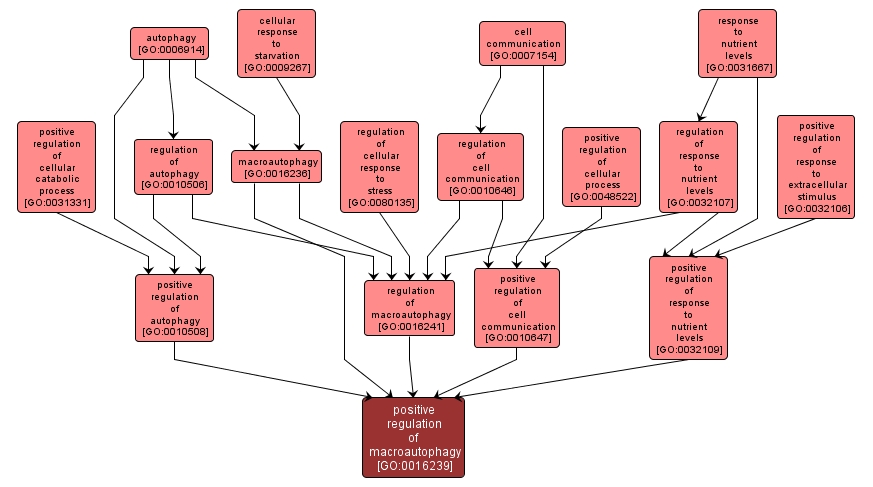GO TERM SUMMARY
|
| Name: |
positive regulation of macroautophagy |
| Acc: |
GO:0016239 |
| Aspect: |
Biological Process |
| Desc: |
Any process, such as recognition of nutrient depletion, that activates or increases the rate of macroautophagy to bring cytosolic macromolecules to the vacuole/lysosome for degradation. |
Synonyms:
- stimulation of macroautophagy
- up regulation of macroautophagy
- activation of macroautophagy
- up-regulation of macroautophagy
- positive regulation of starvation-induced autophagy
- upregulation of macroautophagy
|
|

|
INTERACTIVE GO GRAPH
|














